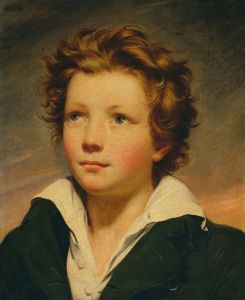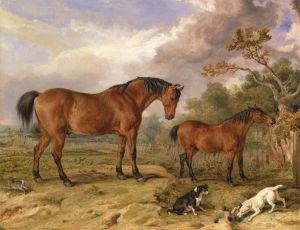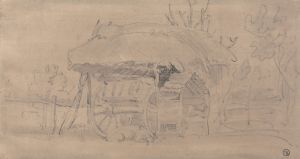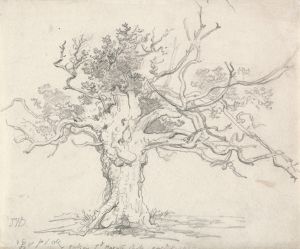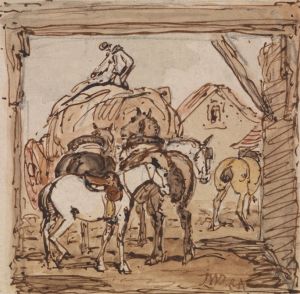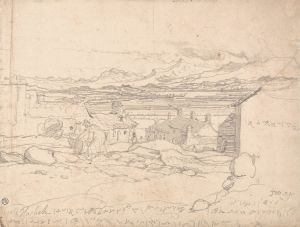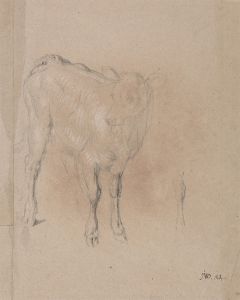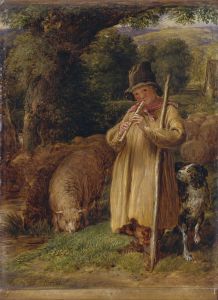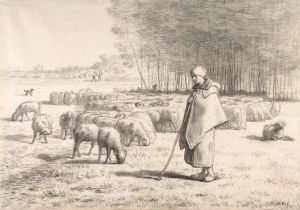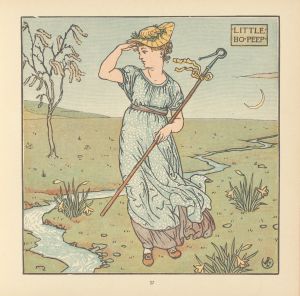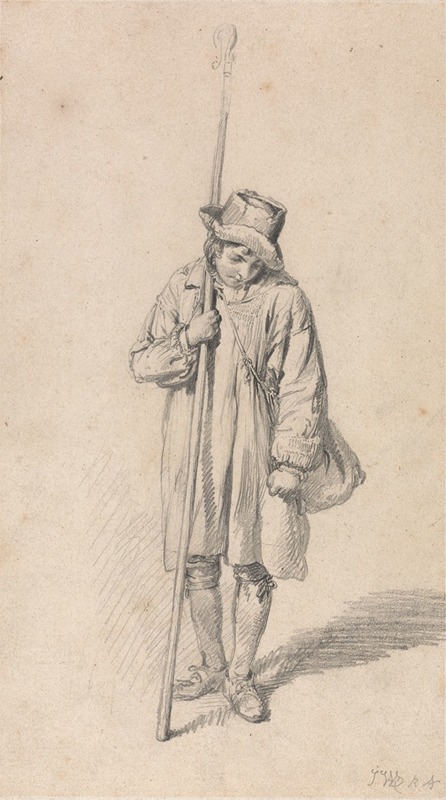
A Shepherd Boy
A hand-painted replica of James Ward’s masterpiece A Shepherd Boy, meticulously crafted by professional artists to capture the true essence of the original. Each piece is created with museum-quality canvas and rare mineral pigments, carefully painted by experienced artists with delicate brushstrokes and rich, layered colors to perfectly recreate the texture of the original artwork. Unlike machine-printed reproductions, this hand-painted version brings the painting to life, infused with the artist’s emotions and skill in every stroke. Whether for personal collection or home decoration, it instantly elevates the artistic atmosphere of any space.
James Ward (1769–1859) was a prominent British painter and engraver, known for his animal paintings and landscapes. One of his notable works is "A Shepherd Boy," which exemplifies his skill in capturing rural life and the natural world. This painting, created in the early 19th century, reflects Ward's deep appreciation for the pastoral scenes of the English countryside.
"A Shepherd Boy" depicts a young boy tending to his flock of sheep. The boy, dressed in simple, rustic clothing, stands in a serene landscape, surrounded by his sheep. The composition of the painting is carefully balanced, with the boy positioned slightly off-center, drawing the viewer's eye to his figure and the animals around him. The background features rolling hills and a clear sky, typical of the idyllic rural settings that Ward often portrayed in his works.
Ward's attention to detail is evident in the realistic depiction of the sheep's wool and the textures of the boy's clothing. The naturalistic style of the painting is characteristic of Ward's approach, which was influenced by his early training as an engraver and his admiration for the works of George Stubbs, a renowned animal painter. Ward's ability to convey the peacefulness and simplicity of rural life is a testament to his skill as an artist.
The painting also reflects the Romantic movement's fascination with nature and the pastoral ideal. During this period, there was a growing interest in the beauty of the natural world and the lives of ordinary people, which is evident in Ward's choice of subject matter. "A Shepherd Boy" captures a moment of quiet contemplation, emphasizing the harmony between humans and nature.
James Ward's career was marked by his versatility and his contributions to various genres of painting. He was elected a Royal Academician in 1811, which was a significant recognition of his talent and achievements. Throughout his life, Ward produced a wide range of works, including portraits, landscapes, and animal studies. His paintings were well-received by contemporaries and continue to be appreciated for their technical excellence and emotional depth.
"A Shepherd Boy" remains an important example of Ward's work, showcasing his ability to combine detailed observation with a sense of tranquility and beauty. The painting is held in high regard for its artistic merit and its representation of rural life in early 19th-century England. It is a valuable piece in the study of British art history and the Romantic movement.
In summary, "A Shepherd Boy" by James Ward is a significant work that highlights the artist's talent for depicting rural scenes with precision and sensitivity. The painting's serene composition and detailed execution make it a noteworthy example of Ward's contribution to British art.





